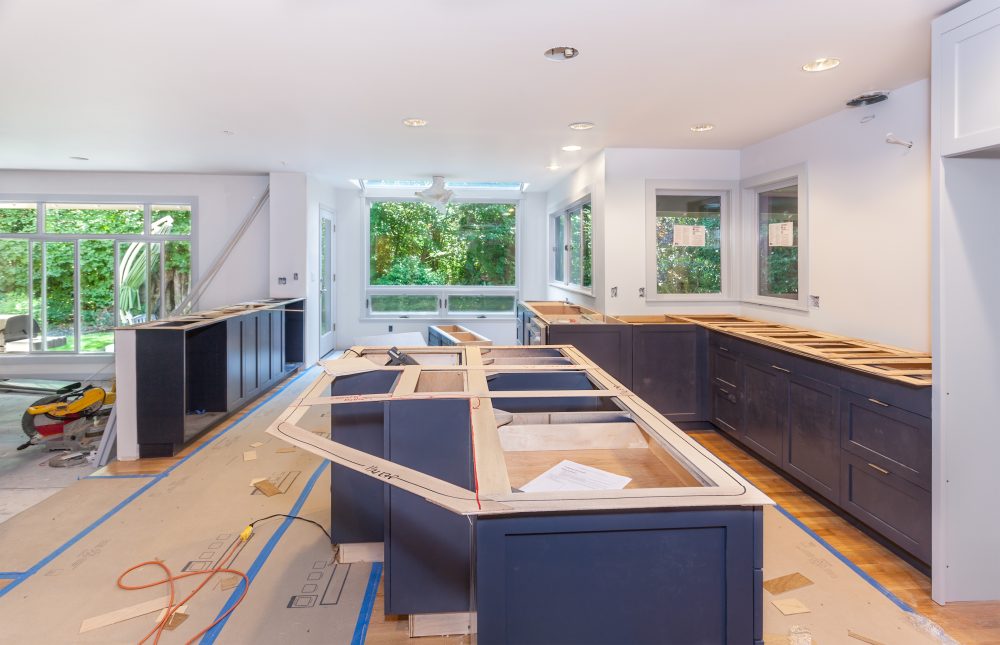Process of Remodeling a Historic Home
Historic homes have a unique charm and character that captivates homeowners and enthusiasts alike. However, these architectural treasures often require remodeling and restoration to ensure their longevity and functionality while preserving their historic essence. Embarking on the journey of remodeling a historic home can be a rewarding experience, but it also demands careful planning, attention to detail, and an understanding of the preservation principles. In this blog post, we will walk you through the process of remodeling a historic home, highlighting key considerations and steps along the way.

Step 1: Research and Planning
Remodeling a historic home begins with extensive research. Start by understanding the historical significance and architectural style of your home. Consult local historical societies, archives, or preservation organizations to gather information about the original design, materials, and any restrictions or guidelines that apply to remodeling. This research will serve as the foundation for your remodeling plans.
Step 2: Assessing the Structure and Condition
Before diving into the remodeling process, it’s crucial to thoroughly assess the structure and condition of the home. Engage a professional architect, engineer, or preservation specialist who specializes in historic homes. They will conduct a detailed inspection, identifying any underlying issues, such as structural damage, deteriorating materials, or outdated electrical and plumbing systems. This assessment will help you prioritize the necessary repairs and renovations.
Step 3: Establishing a Budget
Once you have a clear understanding of the required repairs and renovations, establish a realistic budget. Historic home remodeling projects can be costlier than conventional homes due to the need for specialized craftsmanship, restoration work, and adherence to preservation standards. Consider allocating funds for unexpected surprises that may arise during the remodeling process.
Step 4: Obtaining Permits and Approvals
Remodeling a historic home often requires obtaining permits and approvals from local authorities, historic preservation commissions, or architectural review boards. Familiarize yourself with the necessary paperwork, guidelines, and restrictions in your area. Engage with these entities early in the process to ensure your remodeling plans align with the preservation guidelines and secure the required permissions.
Step 5: Design and Preservation Principles
Preserving the historic integrity of your home while incorporating modern amenities and functionality is a delicate balance. Collaborate with an architect or designer experienced in historic renovations to develop a design that respects the original architecture and character. Consider using materials, finishes, and fixtures that are historically accurate or suitable substitutes for preservation purposes.
Step 6: Hiring Skilled Professionals
Remodeling a historic home requires specialized skills and craftsmanship. Hire professionals experienced in working with historic structures, including architects, contractors, carpenters, electricians, and plumbers. Look for contractors who have successfully completed similar projects and can provide references. Their expertise will be invaluable in executing the remodeling plans while preserving the home’s historical significance.
Step 7: Execution and Restoration
With the design and professionals in place, the remodeling process begins. The restoration may involve repairing and preserving original features, such as woodwork, moldings, windows, and flooring. Salvage and reuse materials whenever possible, maintaining the historical character of the home. Be prepared for unexpected discoveries and adjustments along the way as older homes often have hidden surprises.
Step 8: Modernization and Energy Efficiency
While preserving the historic character, it is essential to bring your home up to modern standards of comfort and energy efficiency. Upgrading electrical systems, plumbing, insulation, and HVAC systems will enhance the livability of your home while minimizing its environmental impact. Strive for a harmonious blend of modern convenience and historical charm.
Step 9: Finishing Touches and Interior Design
As the remodeling nears completion, focus on the finishing touches and interior design. Choose furnishings, fixtures, and décor that complement the historical aesthetic of your home. Incorporate period-appropriate colors, textures, and architectural details to create a cohesive and authentic atmosphere.
Remodeling a historic home is a labor of love that requires dedication, research, and a deep appreciation for architectural history. By following the steps outlined above, you can successfully restore and renovate your historic home, preserving its unique character for future generations to enjoy.
Contact us at Complete Construction for more information about our remodeling process and to see more of what we do. Remember, patience is key, as the process may take longer than a typical remodel. The result, however, will be a stunning blend of the past and present, honoring the legacy of your home while creating a comfortable and functional living space.
